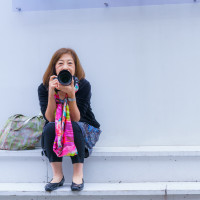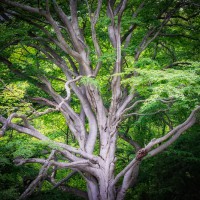SEARCH






|
|
|
|


by Yvette Depaepe
Published the 3rd of June 2024
Ahmed Sobhi excels in wildlife photography. The answers to the questions explain why this photographic category is his biggest passion. To him, photography is not just a hobby, it also is a meditation for his soul. He quotes: 'In essence, photography has become a profound source of inspiration, spiritual connection, and a way to infuse a sense of adventure into my life. It's a journey that continuously enriches my soul and deepens my appreciation for the marvels of the natural world.'
See a wonderful gallery of Ahmed's images at the end of this interview.
'Motherhood'
Dear Ahmed, first I would like to thank you for taking the time to answer this questionnaire! To begin, please introduce yourself shortly and tell us more about you, your hobbies or other projects you are involved in!
Firstly, I would like to express my sincere appreciation and gratitude for this interview opportunity with your esteemed publication, 1x Magazine. My name is Ahmed Mohamed Sobhi, I am a 52-year-old Egyptian residing in Kuwait. Professionally, I hold the position of Chief Financial Officer within a financial institution.
Outside of work, my life is enriched by my roles as a husband and father to three boys and one girl. One of my greatest passions is travelling, as it allows me to explore diverse cultures and landscapes, broadening my perspective on the world. However, my primary hobby, which brings me immense joy, is wildlife photography. Capturing the beauty and essence of nature's creatures through my lens is a deeply rewarding experience for me.
When and how did you start your photographic journey?
Although my love for photography began in my youth, it wasn't until 2016 that I delved into it more seriously. Prior to that, I would casually take pictures during family gatherings and travels, capturing precious moments with loved ones. However, it was in 2016 when I acquired my first professional camera and embarked on a journey of learning and exploration.
Initially, my focus was on street and landscape photography, honing my skills through training and practice. It wasn't until a memorable evening in 2017 that my passion took a new direction. While standing on the waterfront, intending to capture the beauty of the sunset, a captivating scene unfolded before my eyes.
A seagull, gracefully gliding over the water, caught my attention as it skilfully attempted to catch fish. Entranced by this spontaneous display of nature, I shifted my focus entirely to the seagull, capturing its movements and interactions with precision. That moment marked a turning point for me, igniting a deep love and appreciation for wildlife photography.
Since then, I have dedicated myself to capturing the wonder and beauty of animals in their natural habitats.
For many of us photography is either a hobby or a way of life. How would you define your relationship with photography?
To me, photography is not just a hobby; it's akin to meditation for my soul. Through wildlife photography, I've gained invaluable insights by observing the behaviours of animals and birds. Their movements speak volumes, allowing me to anticipate their actions and capture those fleeting moments with my camera.
What fascinates me most is witnessing the greatness of the creator reflected in the intricate actions of wildlife. Each creature, from the graceful flight of a bird to the stealthy hunt of a predator, is a testament to the wonders of nature.
Moreover, photography serves as a means to break free from the routines of daily life. It immerses me in the present moment, offering a sense of tranquillity and mindfulness. Whether I'm in the wilderness or amidst urban landscapes, photography allows me to pause, observe, and appreciate the beauty that surrounds us.
In essence, photography has become a profound source of inspiration, spiritual connection, and a way to infuse a sense of adventure into my life. It's a journey that continuously enriches my soul and deepens my appreciation for the marvels of the natural world.
What would be the most important experience so far that has influenced your steps in photography?
One of the most significant experiences shaping my journey in photography has been the time spent immersed in wildlife photography. The essence of this pivotal experience lies in the moments of quiet anticipation, waiting for the perfect shot of birds and animals in their natural habitats. Through these prolonged periods of observation and waiting, I've cultivated a profound sense of patience. Each moment teaches me the art of stillness, attentiveness, and understanding the rhythm of nature.
Moreover, photography has opened doors to meaningful connections and friendships across the globe. I've had the privilege of meeting fellow photographers, enthusiasts, and conservationists from diverse backgrounds, united by our shared passion for capturing the beauty of the natural world.
These experiences have not only enriched my photography skills but also shaped my perspective on life. They've taught me the value of patience, the beauty of connections forged through shared passions, and the profound impact of immersing oneself in the wonders of nature.
You have your very own style. Why are you so drawn by wildlife photography?
Thank you for the kind words! Wildlife photography holds a special place in my heart for several compelling reasons.
Firstly, the allure of wildlife lies in its unpredictability and raw authenticity. Each encounter with wild animals offers a unique and unscripted narrative, filled with moments of awe, tenderness, and ferocity. Capturing these genuine emotions and behaviours through my lens allows me to tell compelling stories that resonate with viewers on a deep level.
Secondly, wildlife photography serves as a gateway to connect with the natural world on a profound level. It fosters a sense of reverence and respect for the delicate balance of ecosystems, reminding us of our interconnectedness with all living beings. Through photography, I strive to highlight the beauty and diversity of wildlife, promoting conservation awareness and advocacy for preserving our planet's precious biodiversity.
Additionally, the technical and artistic challenges of wildlife photography continually push me to expand my skills and creativity. From mastering intricate camera settings to composing compelling shots in dynamic environments, every photograph is a journey of growth and learning.
Ultimately, wildlife photography is more than just a passion; it's a calling that allows me to celebrate the magnificence of life in its purest form. It inspires wonder, evokes empathy, and invites others to join me in appreciating the wonders of the natural world.
What is more important to you, the mood,/story behind your images or the technical perfection?
For me, the mood and story behind my images hold greater significance than technical perfection. While technical proficiency is undoubtedly essential in producing high-quality photographs, it is the emotional impact and narrative depth of an image that truly resonates with viewers and makes a lasting impression.
Photography, especially wildlife photography, is about capturing moments that evoke emotions, tell stories, and convey the essence of the subject. Whether it's the tender bond between parent and offspring in the animal kingdom or the raw beauty of a natural landscape, each image carries a narrative waiting to be discovered.
Technical perfection is a valuable tool that enables me to translate my creative vision into tangible photographs. It ensures clarity, composition, and exposure are optimized to showcase the subject in the best possible light. However, it is the mood, atmosphere, and storytelling elements within an image that breathe life into it, sparking curiosity and engaging the viewer on a deeper level.
Striking a balance between technical precision and emotional resonance is essential. I strive to maintain technical excellence while also infusing my images with soulful storytelling, capturing moments that evoke a sense of wonder, connection, and appreciation for the natural world. Ultimately, it's the emotional impact and meaningful narratives that make photography a powerful medium of expression and communication for me.
What generally is your relationship to your subject matter beyond being an observer?
My relationship with my subject matter extends far beyond mere observation; it embodies a deep sense of connection, respect, and empathy.
When photographing wildlife, I approach each encounter with a profound reverence for the creatures I photograph. I strive to be a respectful guest in their natural habitats, minimizing disturbances and ensuring my presence has minimal impact on their behaviour and environment.
Beyond being an observer, I aim to understand and appreciate the unique characteristics, behaviours, and intricacies of each species. This involves extensive research, field observations, and interactions with conservationists and local experts. By immersing myself in the world of my subjects, I gain a deeper understanding of their lives, challenges, and the ecosystems they inhabit.
Moreover, my photography serves as a platform for storytelling and advocacy. I seek to highlight the beauty, vulnerability, and importance of wildlife and nature conservation. Through my images, I aim to foster empathy, raise awareness about environmental issues, and inspire action towards preserving our planet's biodiversity.
Ultimately, my relationship with my subject matter goes beyond capturing aesthetically pleasing photographs; it's about forging meaningful connections, promoting conservation ethics, and nurturing a sense of stewardship towards our natural world.
Do you prepare carefully the locations where you are intending to photograph?
Absolutely, meticulous preparation is crucial when planning wildlife photography expeditions. Here’s how I typically approach it:
Research: I start by researching potential locations based on the species I want to photograph. This includes studying their habitats, behaviours, and preferred environments. I also gather information on best times of day for sightings, seasonal variations, and any special considerations.
Scouting: Whenever possible, I conduct on-site scouting trips or rely on insights from local guides and wildlife experts. This helps me understand the terrain, optimal vantage points, potential challenges, and safety considerations.
Equipment Check: I ensure my camera gear is in top condition and suitable for the environment I'll be shooting in. This includes selecting the right lenses, camera settings, and accessories such as tripods, lens hoods, and protective gear if needed.
Weather Monitoring: Keeping an eye on weather forecasts is crucial, especially for outdoor photography. I plan my shoots around favourable weather conditions that enhance lighting, visibility, and overall image quality.
Logistics: I plan logistics such as transportation, accommodations, permits (if required), and safety protocols. This includes having backup plans for unforeseen circumstances such as equipment failures or unexpected changes in weather or wildlife behaviour.
Respect for Wildlife: I prioritize ethical photography practices and abide by wildlife conservation guidelines. This includes maintaining a safe distance from animals, avoiding disrupting their natural behaviours, and never putting myself or the animals at risk for the sake of a photograph.
By carefully preparing and planning ahead, I maximize my chances of capturing compelling wildlife photographs while also respecting and preserving the natural environment and its inhabitants.
Describe your overall photographic vision.
My photographic vision revolves around capturing the essence of life and nature in its purest form. I strive to create images that transcend mere visual appeal, delving deeper into emotions, stories, and connections.
Storytelling: At the core of my vision is storytelling. I believe every photograph should narrate a compelling story or evoke a powerful emotion. Whether it's the tender bond between a mother and her offspring in the animal kingdom or the resilience of life in challenging environments, each image carries a narrative waiting to be discovered.
Emotional Impact: I aim to evoke a strong emotional response from viewers through my photographs. Whether it's awe, empathy, curiosity, or inspiration, I want viewers to connect with the subjects and scenes captured in my images on a deep and meaningful level.
Connection with Nature: Nature is my muse, and I seek to showcase its beauty, diversity, and fragility through my lens. I want viewers to develop a deeper appreciation for the natural world, fostering a sense of wonder, respect, and responsibility towards conservation and environmental stewardship.
Authenticity: Authenticity is key to my photographic vision. I strive to capture genuine moments, expressions, and interactions without artificiality or manipulation. I believe authenticity lends credibility and emotional resonance to my work.
Technical Excellence: While storytelling and emotional impact are paramount, I also value technical excellence in my photographs. Sharpness, composition, lighting, and other technical aspects play a crucial role in enhancing the visual appeal and overall quality of my images.
Inspiration and Advocacy: Ultimately, I hope my photography inspires others to see the world through a different lens, sparking curiosity, appreciation for nature, and a desire to protect and conserve our planet's natural wonders.
In summary, my photographic vision is a fusion of storytelling, emotional impact, connection with nature, authenticity, technical excellence, and advocacy for conservation. It's a vision rooted in a deep passion for capturing the beauty, complexity, and resilience of life and the natural world.
What are the main features of a successful wildlife photographer in your opinion?
In my opinion, successful wildlife photographers possess a combination of skills, attributes, and qualities that contribute to their achievements in the field. Here are the main features I believe define a successful wildlife photographer:
Patience: Patience is essential in wildlife photography. Successful photographers are willing to spend extended periods waiting for the perfect moment to capture a compelling image. They understand that wildlife behaviour is unpredictable, and patience often leads to rewarding shots.
Observational Skills: Wildlife photographers must be keen observers. They pay attention to subtle cues and behaviours that may indicate an upcoming opportunity for a great photograph. Understanding animal habits and movements helps them anticipate and prepare for shots.
Technical Proficiency: A strong grasp of technical aspects such as camera settings, exposure, composition, and post-processing techniques is crucial. Successful wildlife photographers know how to use their equipment effectively to capture sharp, well-exposed, and visually appealing images in diverse conditions.
Fieldcraft: Fieldcraft refers to the ability to navigate natural environments skilfully without disturbing wildlife. Successful photographers respect the habitats and subjects they photograph, minimizing their impact and maximizing opportunities for authentic shots.
Adaptability: Wildlife photography often presents challenges such as changing light conditions, weather, and unexpected animal behaviour. Successful photographers are adaptable and quick to adjust their approach, settings, and compositions to make the most of each situation.
Persistence: Wildlife photography requires persistence and determination. Successful photographers are committed to honing their skills, learning from failures, and continuously striving to improve their craft. They understand that success often comes after many attempts and setbacks.
Ethical Practices: Ethical considerations are paramount in wildlife photography. Successful photographers prioritize the well-being of animals and ecosystems, adhering to ethical guidelines and conservation principles. They avoid intrusive or harmful practices that could endanger wildlife or their habitats.
Passion and Dedication: Above all, successful wildlife photographers are fuelled by passion and dedication for their craft. They have a genuine love for nature and wildlife, and this passion shines through in their images, inspiring others and contributing to conservation efforts.
By embodying these features, wildlife photographers can create impactful and meaningful work while contributing positively to wildlife conservation and appreciation.
Can you please tell us something more about your workflow from the idea to the final product?
Certainly! Here's an overview of my workflow from conceptualizing an idea to producing the final product in wildlife photography:
The process typically starts with an idea or concept for a photo series or project. This could be inspired by a specific species, behaviour, habitat, or theme that I want to explore and capture.
Research and Planning:
Once I have an idea, I conduct thorough research to understand the subject matter better. This includes studying the behaviour, habitats, and characteristics of the wildlife I intend to photograph. I also research potential locations, optimal times for sightings, and any logistical considerations.
Equipment Preparation:
Based on my research and planned shooting conditions, I prepare my camera gear and accessories accordingly. This includes selecting the appropriate lenses, filters, tripods, and other equipment needed for the shoot.
Scouting and Location Visits:
Before the actual shoot, I may conduct scouting trips to the location to familiarize myself with the terrain, identify potential vantage points, and assess lighting conditions. This helps me plan compositions and anticipate potential challenges.
Shooting Session:
During the shooting session, I focus on capturing a variety of images that align with my initial concept and vision. I use a combination of techniques such as long lenses for close-ups, wide-angle shots to capture environments, and fast shutter speeds to freeze motion.
Review and Selection:
After the shoot, I review the captured images to assess technical aspects like focus, exposure, and composition. I also consider the storytelling and emotional impact of each image. From the initial set, I narrow down the selection to the strongest photos that convey the intended message or story.
Post-Processing:
In post-processing, I use editing software like Adobe Lightroom or Photoshop to enhance the selected images. This may involve adjustments to exposure, contrast, colour balance, and sharpness. I aim to maintain a balance between enhancing the visual appeal while preserving the authenticity of the scene.
Final Presentation:
Once the editing is complete, I finalize the images for presentation. This may include resizing for specific platforms, adding metadata and copyright information, and organizing the images into a cohesive series or portfolio.
Sharing and Promotion:
Finally, I share the finished photographs through various channels such as online galleries, social media, exhibitions, or publications. I may also engage in promotional activities to showcase my work, collaborate with other artists, and contribute to conservation initiatives related to wildlife and nature.
Throughout this workflow, my goal is to stay true to my vision, convey meaningful stories, and create impactful images that resonate with viewers and contribute positively to wildlife appreciation and conservation.
Where do you look to find inspiration and what inspires you the most?
I find inspiration from a variety of sources, both within and outside the realm of photography. Here are some key sources of inspiration that fuel my creativity:
Nature and Wildlife: The natural world is a constant source of inspiration for me. I draw inspiration from the beauty, diversity, and resilience of nature and wildlife. Observing the intricate patterns, colours, behaviours, and interactions in the natural environment sparks my creativity and motivates me to capture these moments through photography.
Many are of the opinion that the gear is not very important when the passion for photography is strong. However, can you please share with us what gear you use (camera, lenses, lighting, tripod, etc.)?
Absolutely, while passion and creativity are paramount in photography, having the right gear can also significantly enhance the quality and versatility of your work. Here's an overview of the gear I typically use for wildlife photography:
Camera Body: I use a professional camera body known for its fast autofocus, high- resolution sensor, and robust build quality. Sony A1 and Sony and Sony A7R mark 5
Lenses: The choice of lenses depends on the type of wildlife photography and the desired focal length range. I use lenses Sony G-Master 600mm f/4 and 400mm F/2.8
Is there anything else you wish to add and what do you think about 1X as a home base for your work?
I'd like to express my gratitude for this interview opportunity and for the engaging conversation about photography and creativity. It's been a pleasure sharing my thoughts, experiences, and aspirations related to photography.
Regarding 1X as a home base for my work, I find it to be a fantastic platform for showcasing and sharing photography with a global audience of fellow photographers, art enthusiasts, and potential collaborators. The community on 1X is vibrant, supportive, and filled with talented individuals who inspire and challenge me to grow as a photographer.
The high standards and curated selection of images on 1X ensure that the platform maintains a level of excellence and artistic integrity, which I value immensely. It's not just a place to display photographs but also a space for meaningful interactions, feedback, and appreciation for the art of photography.
In conclusion, I believe 1X serves as an ideal home base for my work, allowing me to share my photography journey, engage with a supportive community, and contribute to the collective celebration of creativity and visual storytelling.
'Hunter'
'Baby owl'
'Final blow'
'Hurry'
'Black & Red'
'Serval Cat'
'Winner'
'Monitor lizard'
'Await'
'Hungry'
'Snake Eagle'
'Couple'
'Baby Lion'
<span lang="EN-GB" style="font-size: 11.0pt; line-height: 115%; font-family: proxima-nova; mso-bidi-font-family: ""; mso-ansi-language: EN-GB;">'Dots'
'Steppe Eagle'
'Tasty'
'Wings'
'Eastern imperial eagle'
'hidden'
'Cuteness'
'Desert of the dragon'
 | Write |
 | Miro Susta CREW Ahmed your wildlife photos are wonderful, accept my congratulations, dear Yvette many thanks for interesting interview |
 | Yanny Liu PRO Amazing pictures, big Congratulation to you! |
 | Amador Funes PRO Impressive photographs. Congratulations¡ |
 | JUNKO TORIKAI PRO Congratulations on the feature! I'm always fascinated by your wonderful works. By the way, which is your favorite wildlife field? I'd like to visit it someday. |
 | Yun Thwaits PRO Amazing works! Congrats! |
 | Cristiano Giani PRO Stunning images and great and exhaustive interview. Many congrats and huge thanks.... |
 | Jane Lyons PRO What fabulous photographs! Congratulations, Ahmed |
 | Lourens Durand CREW Great interview and first class photographs! |
 | Ahmed Sobhi PRO Thank you very much it was interested interview |
 | Yvette Depaepe CREW Great to present you to the readers and followers, Ahmed.
Congratulations with the feature of Photographer of the Week.
Cheers, Yvette |